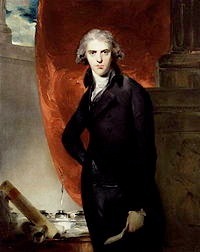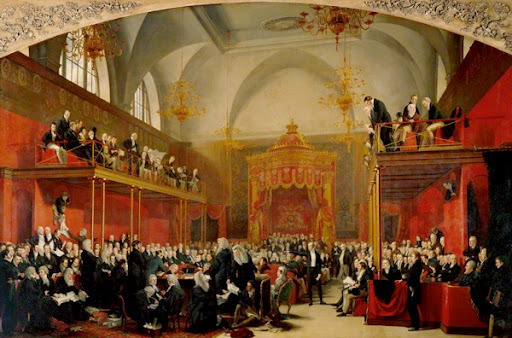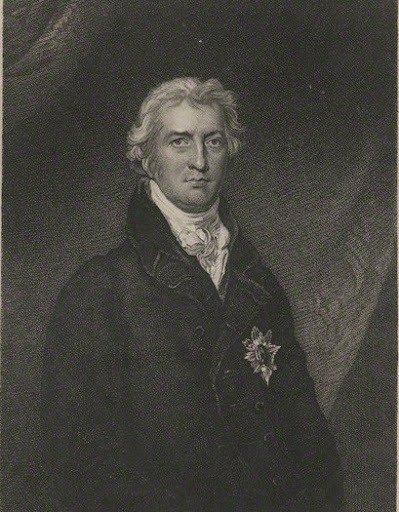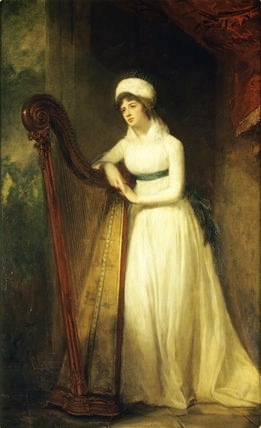Regency Era Prime Ministers-Robert Banks Jenkinson
Regency History
Often in my research I keep needing to find who was leading the government and do this through every book. I thought that having the list handy would be good, and then turning it into a research webpage even better. Here is the list. After I post a few more Timeline years and write some more, I will work on the web page with notes about each PM.
The next PM I am doing is Robert Banks Jenkinson, 2nd Earl of Liverpool and I am hosting a page devoted to him and then all our period PMs at Regency Assembly Press. That page is here.
William Henry Cavendish-Bentinck, 3rd Duke of Portland
04/02/1783
12/19/1783
Whig
William Pitt the Younger
12/19/1783
03/14/1801
Tory
Henry Addington 1st Viscount Sidmouth, “The Doctor”
03/14/1801
05/10/1804
Tory
William Pitt the Younger
05/10/1804
01/23/1806
Tory
William Wyndham Grenville, 1st Baron Grenville
02/11/1806
03/31/1807
Whig
William Henry Cavendish-Bentinck, 3rd Duke of Portland
03/31/1807
10/04/1809
Tory*
Spencer Perceval
10/04/1809
05/11/1812
Tory
Robert Banks Jenkinson, 2nd Earl of Liverpool
06/08/1812
04/09/1827
Tory
George Canning
04/10/1827
08/08/1827
Tory
Frederick John Robinson, 1st Viscount Goderich
08/31/1827
08/21/1828
Tory
Arthur Wellesley, 1st Duke of Wellington
08/22/1828
11/16/1830
Tory
Charles Grey, 2nd Earl Grey
11/22/1830
07/16/1834
Whig
William Lamb, 2nd Viscount Melbourne
07/16/1834
11/14/1834
Whig
Arthur Wellesley, 1st Duke of Wellington
11/14/1834
12/10/1834
Tory
Sir Robert Peel, 2nd Baronet
12/10/1834
04/18/1835
Conservative
William Lamb, 2nd Viscount Melbourne
04/18/1835
08/30/1841
Whig
Tory* (Tory government, PM a Whig)
Born 06/07/1770 London
Died 12/04/1828 Kingston-upon-Thames, Surrey
Major Acts:
Importation Act 1815 – Prohibits import of foreign wheat until domestic reached minimum price.
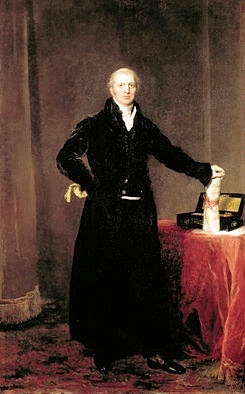
The Earl of Liverpool, Robert Banks Jenkinson, became known for repressive measures introduced to restore order, but he also steered the country through the period of radicalism and unrest which followed the Napoleonic Wars.
Having served earlier in his career as leader of the House of Lords, Foreign Secretary and War Secretary, Liverpool was asked to form a government after the assassination of Spencer Perceval in 1812.
Few expected Liverpool to survive in office very long, as at first his government seemed very insecure. Which had also been said of Perceval’s government. Liverpool’s government survived for 15 years.
But the opposition provided by the Whig party was weak and disunited, and Liverpool was able to draw on the talents of individuals such as Sidmouth, The Duke of Wellington, Castlereagh and Canning.
The ending of the Napoleonic Wars with France in 1815, aided by Wellington’s victories in the field, further boosted support for Liverpool.
But after the war, unrest broke out at home, partly caused by an economic recession that started in 1817. Unemployment, a bad harvest and high prices produced riots and protests.
Actions such as the repeal of income tax and the creation of the Corn Laws tended to make the situation worse. Lord Liverpool’s government reacted by suspending habeas corpus for two years.
Things became even worse in summer 1819, when large gatherings in favour of parliamentary reform culminated in a massive public meeting in Manchester on 16 August. Soldiers attacked the crowds, killing eleven and wounding many more.
The shocking event became known as the Peterloo Massacre. Liverpool’s subsequent ‘Six Acts’ curtailed the right to hold radical meetings.
The crackdown on liberty prompted an attempt by radicals in 1820 to murder Liverpool and his Cabinet and start a radical revolution.
But the Cato Street Conspiracy, as it became known, proved unsuccessful, and the conspirators were hung or transported.
During the 1820s Liverpool’s policy became increasingly liberal, and a period of economic prosperity began.
Liverpool also returned Britain to the Gold Standard in 1819. The anti-trade union laws were repealed, and many trading restrictions were removed.
A stroke forced Liverpool to resign and he died the following year. Liverpool Street in London is named after him.
Ministry
06/08/1812 04/09/1827
Lord Liverpool – First Lord of the Treasury and Leader of the House of Lords
Lord Eldon – Lord Chancellor
Lord Harrowby – Lord President of the Council
Lord Westmorland – Lord Privy Seal
Lord Sidmouth – Secretary of State for the Home Department
Lord Castlereagh (Lord Londonderry after 1821) – Secretary of State for Foreign Affairs and Leader of the House of Commons
Lord Bathurst – Secretary of State for War and the Colonies
Lord Melville – First Lord of the Admiralty
Nicholas Vansittart – Chancellor of the Exchequer
Lord Mulgrave – Master-General of the Ordnance
Lord Buckinghamshire – President of the Board of Control
Charles Bathurst – Chancellor of the Duchy of Lancaster
Lord Camden – minister without portfolio
Changes
Late 1812 – Lord Camden leaves the Cabinet
September 1814 – William Wellesley-Pole (Lord Maryborough from 1821), the Master of the Mint, enters the Cabinet
February 1816 – George Canning succeeds Lord Buckinghamshire at the Board of Control
January 1818 – Frederick John Robinson, the President of the Board of Trade, enters the Cabinet
January 1819 – The Duke of Wellington succeeds Lord Mulgrave as Master-General of the Ordnance. Lord Mulgrave becomes minister without portfolio
1820 – Lord Mulgrave leaves the cabinet
January 1821 – Charles Bathurst succeeds Canning as President of the Board of Control, remaining also at the Duchy of Lancaster
January 1822 – Robert Peel succeeds Lord Sidmouth as Home Secretary
February 1822 – Charles Watkin Williams-Wynn succeeds Charles Bathurst at the Board of Control. Bathurst remains at the Duchy of Lancaster and in the Cabinet
September 1822 – Following the suicide of Lord Londonderry, George Canning becomes Foreign Secretary and Leader of the House of Commons
January 1823 – Vansittart, elevated to the peerage as Lord Bexley, succeeds Charles Bathurst as Chancellor of the Duchy of Lancaster. F.J. Robinson succeeds Vansittart as Chancellor of the Exchequer. He is succeeded at the Board of Trade by William Huskisson
1823 – Lord Maryborough, the Master of the Mint, leaves the Cabinet. His successor in the office is not a Cabinet member
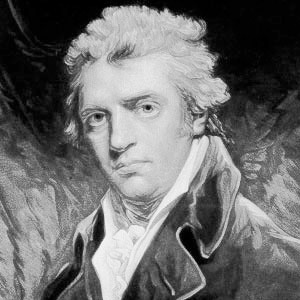
“(I consider) the right of election as a public trust, granted not for the benefit of the individual, but for the public good.”
